Figuring out what leopard sharks eat and how they eat can be confusing because there’s a lot of information. Navigating the leopard shark diet can seem like solving a complex puzzle, leaving you unsure of their eating habits and what these sharks actually munch on.
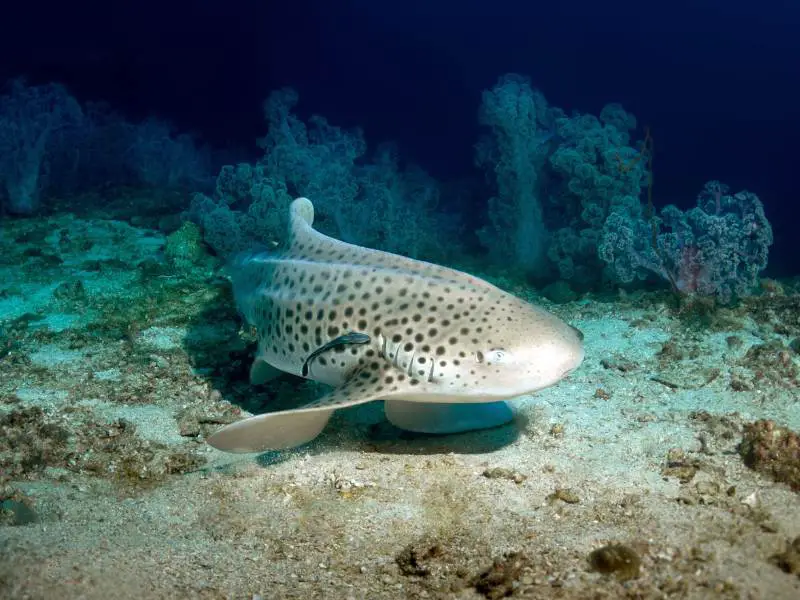
This guide about Leopard Sharks’ Diet and feeding is here to make it easy! By the end, you’ll know exactly what these sharks eat and how they munch their meals. It’ll help you understand more about these sharks and how they survive in the ocean. Let’s explore how leopard sharks grab their snacks!
Introduction to Leopard Sharks
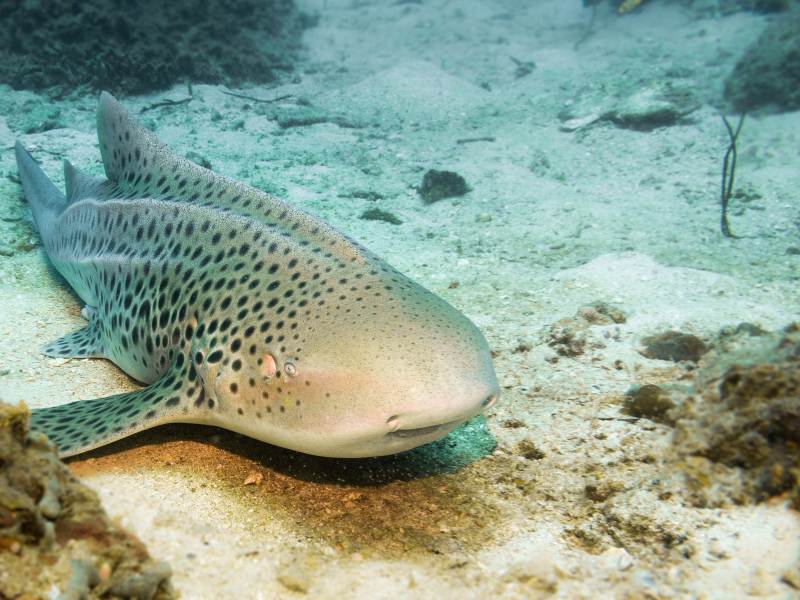
The leopard shark (Triakis semifasciata) is a small coastal shark species found swimming near the seabed in temperate waters from Alaska to Mexico. Belonging to the family Triakidae, these sharks have an elongate, slender body that can grow up to 7 feet long. Their most distinctive feature is their leopard-like spotting which provides effective camouflage.
As benthic sharks that prefer soft ocean bottoms, leopard sharks have evolved specialized adaptations for hunting and feeding in their habitats. Understanding their natural diet and foraging behavior provides valuable insights into their ecology. This blog aims to discuss various aspects of leopard shark feeding habits in detail.
Understanding Leopard Sharks Diet
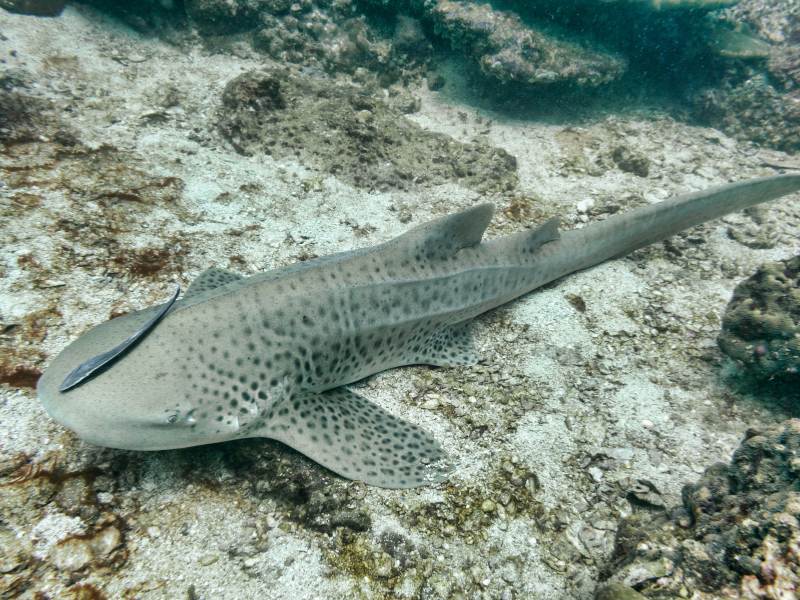
Natural Diet Composition
Leopard sharks are pure carnivores that get all their nutrition by preying on organisms found near the seafloor. Analysis of stomach contents has shown their diet centers around crustaceans, small fish, and cephalopods. Crabs alone can account for 40-60% of their diet on the Pacific Coast.
Regional variations exist based on local prey availability. For example, in California, their diet includes higher proportions of clams and polychaete worms along with regular items like fish, shrimp, and small sharks or rays. This generalist approach allows them to opportunistically feed on abundant regional sources.
Feeding Behavior
Leopard sharks exhibit an exclusively nocturnal foraging pattern to actively hunt for food at night while resting during the day. Around dusk, large aggregations form and sweep inshore areas with incoming tides. Scientific studies have shown their heart rate doubles and metabolic activity peaks at night for hunting.
Also Read: 10 Interesting Facts About Leopard Sharks
What Do Leopard Sharks Eat?
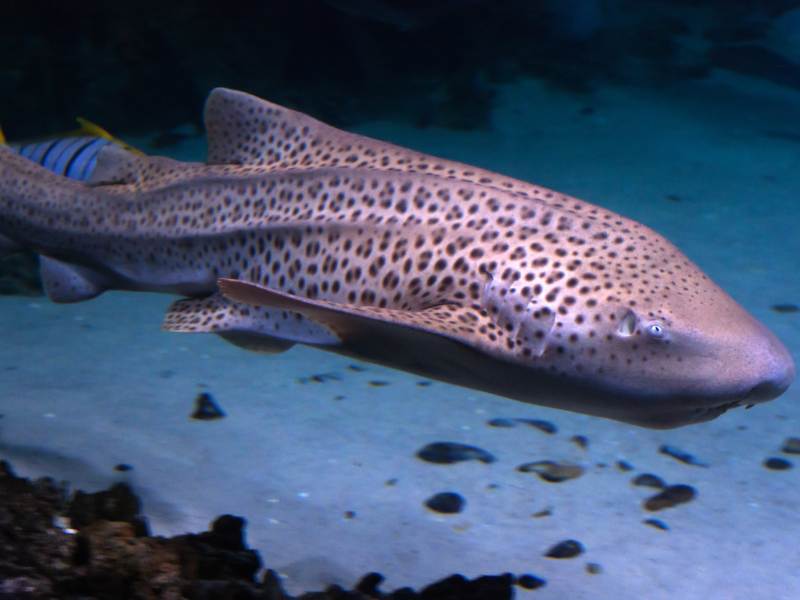
Specific Prey Items
- Crabs and Shellfish: Being adept diggers, leopard sharks particularly enjoy crabs but also consume mollusks like fat innkeeper worms and clam siphons.
- Small Fish and Squid: Common fish prey include bay pipefish, plainfin midshipman, sanddabs, and squid species.
- Other Food: Occasionally they ingest smaller sharks/rays, fish eggs, and polychaete worms foraged from bottom sediments.
Diet Variations in Different Life Stages
Newborn pups likely subsist on small crustaceans like mysid shrimps. As they grow, sub-adults incorporate more small fishes in their diet along with a regular crab menu. Larger sharks prey upon even small rays and smaller sharks.
Leopard Shark Feeding Habits
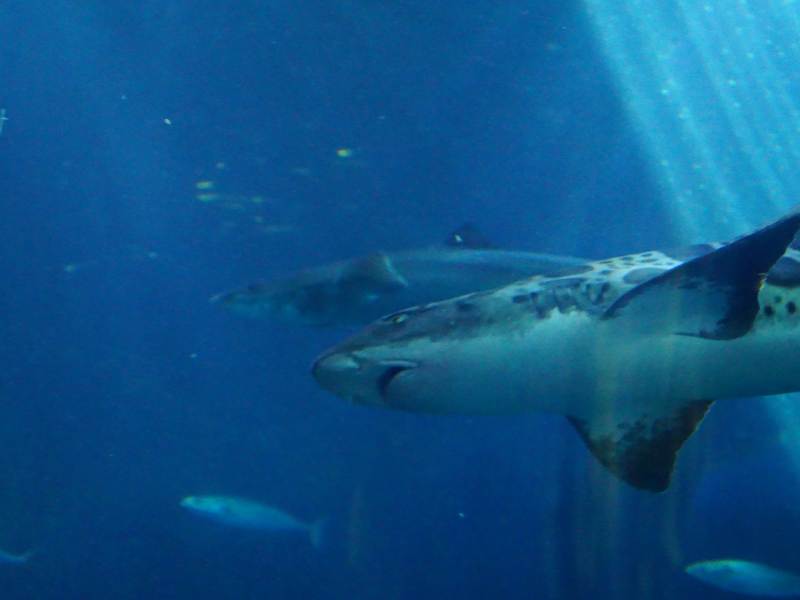
Feeding Mechanisms
With down-turned jaws and serrated teeth, leopard sharks swim just above the seabed with their mouths agape. Their sharp triangular teeth interlock to grip struggling crab prey until swallowed or torn into pieces for eating.
Feeding in Captivity vs. the Wild
In captivity, they accept commercially prepared food but experience less dietary diversity. In natural habitats, complex tidal cycles support highly coordinated hunting in large aggregations, concentrating both sharks and prey.
Human Interactions and Misconceptions
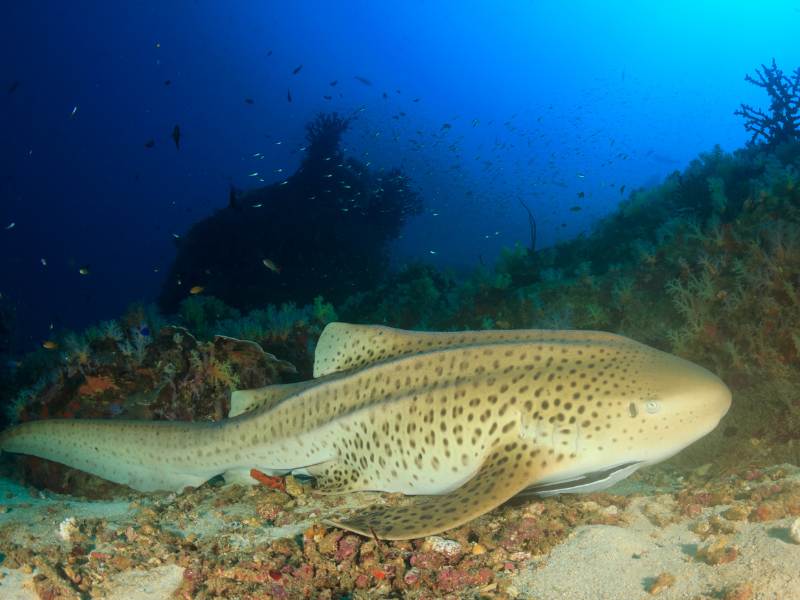
While leopard sharks pose no real threat, misconceptions persist from their sandpaper-rough skin and serrated teeth. There are zero confirmed human fatality cases despite their coastal range overlap with humans. Still, mishandling any wild animal risks injury to both parties.
Conclusion
In conclusion, leopard sharks exhibit specialized foraging adaptations for a benthic lifestyle centered around nocturnal crustaceans and fish predation. A varied diet meeting nutritional needs across all life stages. Understanding true nature dispels myths while informing effective conservation of this important small coastal species. More research is still needed on their complex feeding behaviors and ecological roles.

